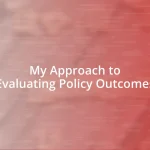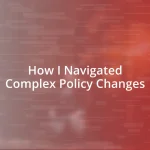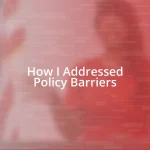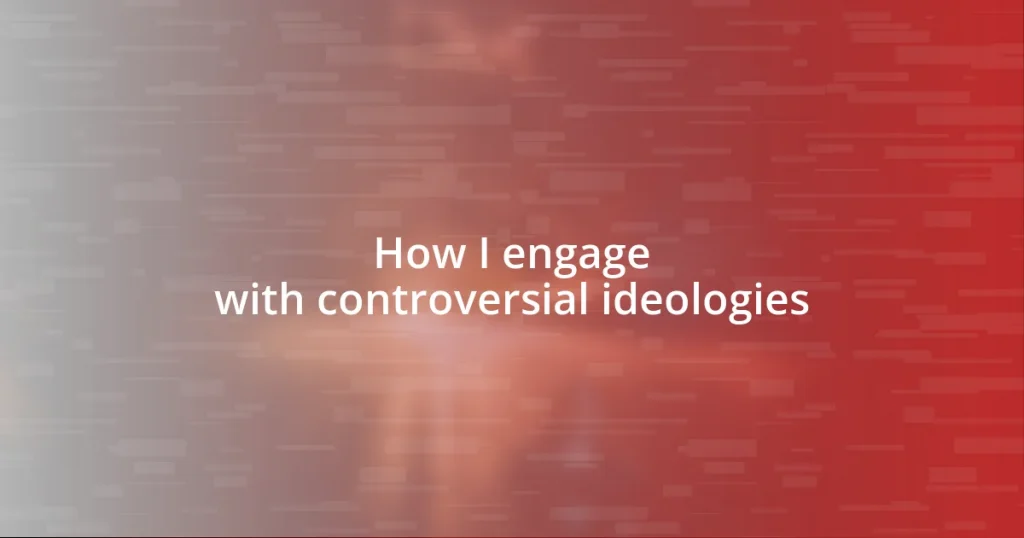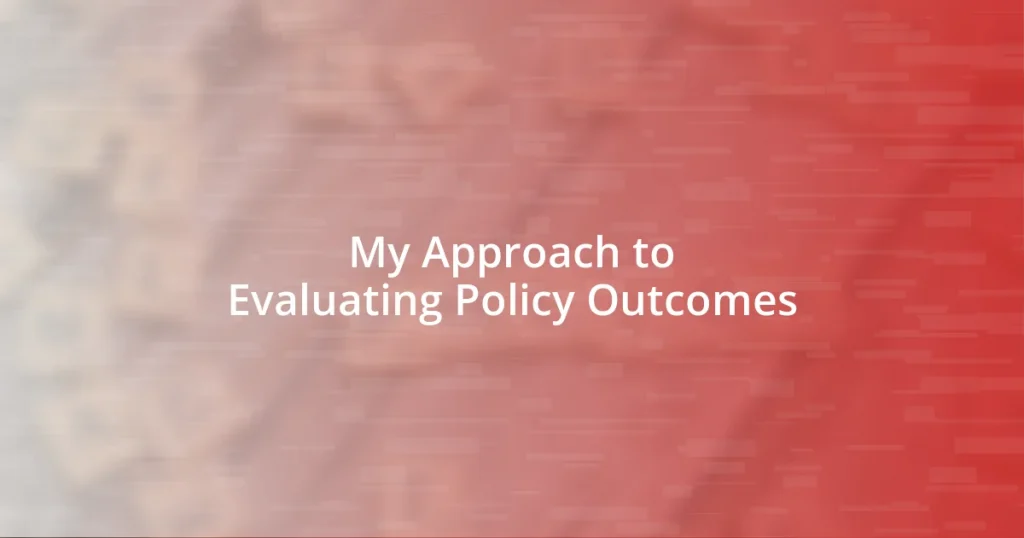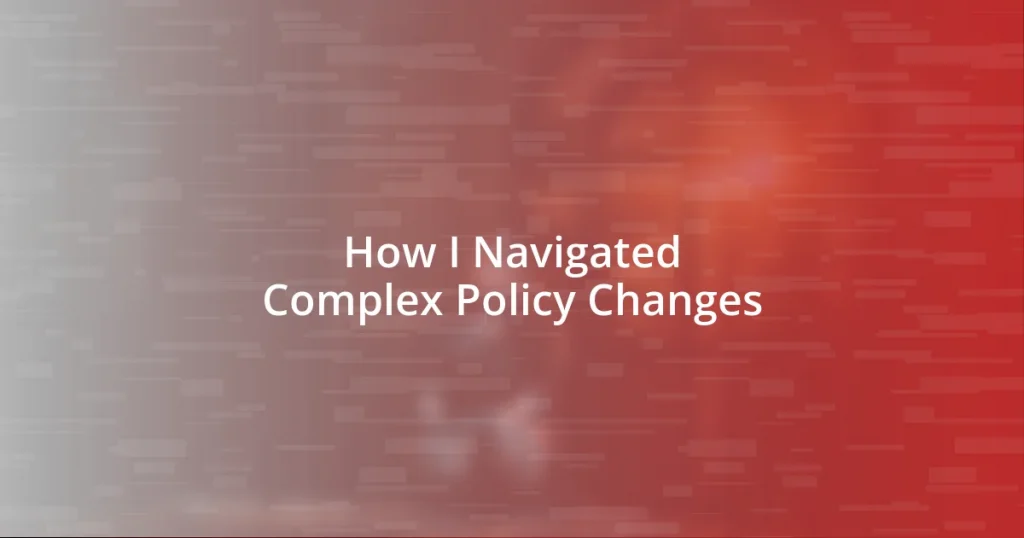Key takeaways:
- Engaging with controversial ideologies requires stepping out of comfort zones and acknowledging the emotions and biases that influence our perspectives.
- Techniques like active listening, asking open-ended questions, and sharing personal stories can foster constructive and respectful discussions.
- Building connections with differing views through curiosity, finding shared values, and storytelling helps create a collaborative dialogue that deepens understanding.
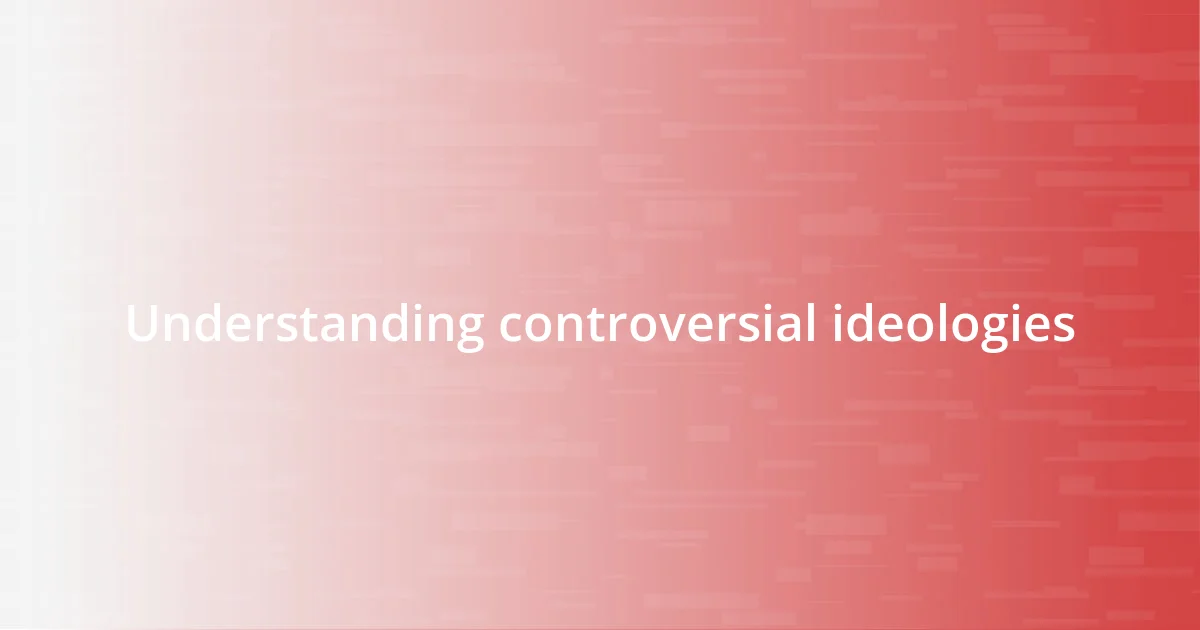
Understanding controversial ideologies
Controversial ideologies often challenge our beliefs and values, prompting deep feelings that can range from discomfort to curiosity. I remember vividly when I stumbled upon a dialogue about radical environmentalism—it sparked a passionate debate with friends over dinner. It made me question, how far should we go to protect our planet, and at what cost?
Exploring these ideologies requires us to step out of our comfort zones. There’s always that moment of hesitation when confronted with a new perspective; I’ve experienced it. Once, while researching viewpoints on socialism, I felt a mix of skepticism and intrigue. This duality kept me engaged—can opposing ideas coexist peacefully in our society?
Understanding controversial ideologies also means acknowledging the emotions tied to them. When discussing topics like immigration or race, I notice how my heart races and my palms sweat. Yet, these conversations are not just about opinions; they’re about people and their lived experiences. How often do we consider the stories behind the ideas we disagree with?
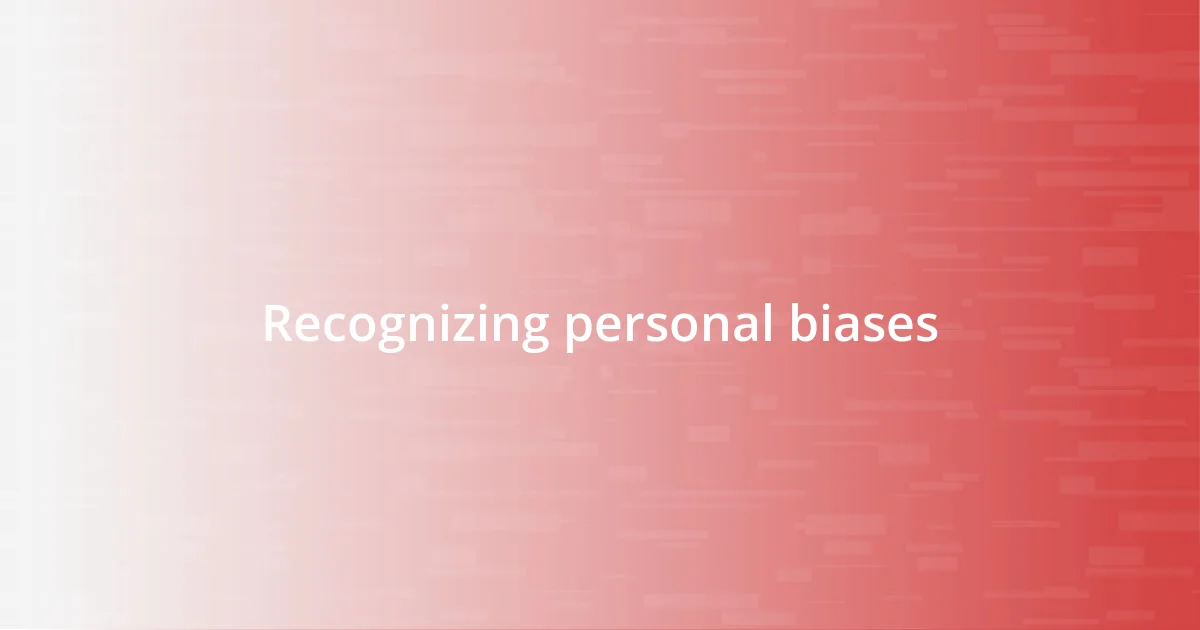
Recognizing personal biases
Recognizing our personal biases is crucial when engaging with controversial ideologies. Personally, I’ve found that reflecting on my upbringing often reveals the subtle influences that shape my views. For instance, having grown up in a diverse community, I’ve learned to appreciate various perspectives, but I also recognize that such an environment can create blind spots toward contrary views.
When I engage with opposing ideologies, I occasionally catch myself defaulting to my preconceived notions. There was a time I instinctively dismissed arguments on economic inequality, only to realize my bias stemmed from my socioeconomic background. This introspection was uncomfortable but essential. It taught me that acknowledging our biases is the first step towards opening our minds to different perspectives.
Moreover, understanding how biases manifest in discussions is enlightening. I’ve observed that I sometimes interrupt more aggressive speakers in debates, which might reflect my discomfort with confrontational styles. This insight encouraged me to work on my listening skills to foster better conversations. How do your biases influence the way you engage with others? Recognizing these patterns can be eye-opening and transformative.
| Personal Experience | Recognized Bias |
|---|---|
| Diverse community upbringing | Blind spots toward contrary views |
| Dismissing economic inequality arguments | Influence of socioeconomic background |
| Interrupting aggressive speakers | Discomfort with confrontational styles |
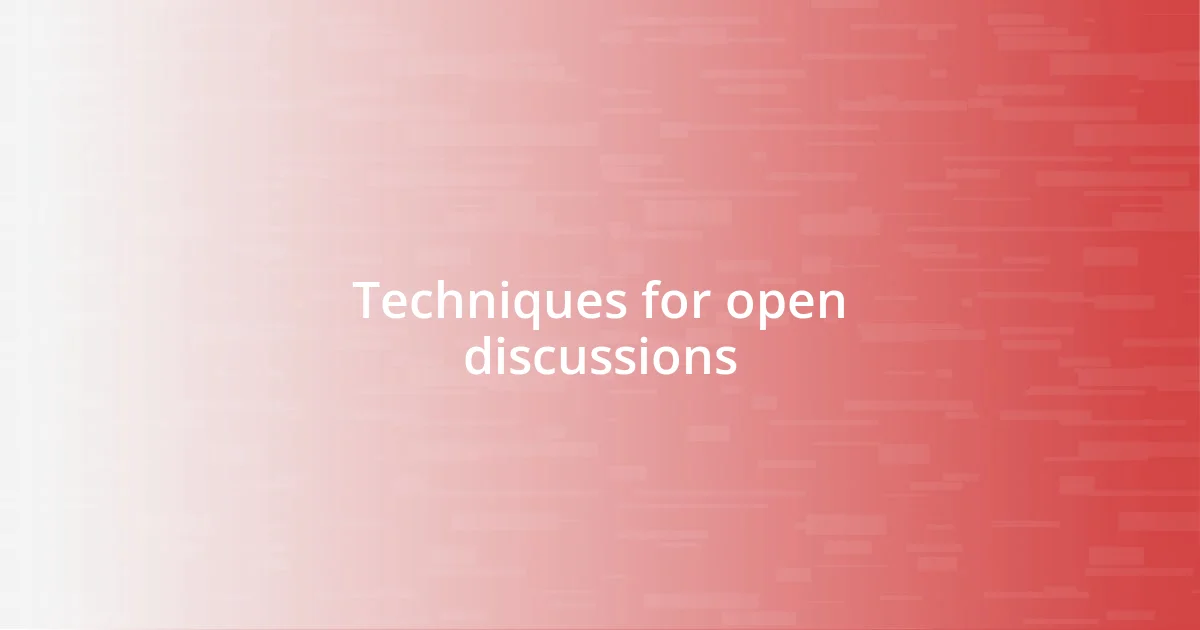
Techniques for open discussions
Engaging in open discussions about controversial ideologies can feel daunting, but employing specific techniques can foster constructive dialogue. One approach I’ve found effective is to create a safe space for participants. I recall a heated conversation on cultural appropriation that became productive when I encouraged everyone to share their feelings first. This laid a foundation of mutual respect and understanding, which allowed for deeper exploration of differing viewpoints without defensiveness.
Here are some techniques to facilitate open discussions:
- Active listening: Really hear what the other person is saying, and show genuine interest in their perspective.
- Ask open-ended questions: Encourage elaboration by prompting others to expand on their thoughts.
- Share personal stories: Relating anecdotes from my life helps humanize abstract ideas and invites others to do the same.
- Stay calm and respectful: Maintaining a calm demeanor even in heated moments can set a positive tone for the discussion.
- Acknowledge emotions: Recognizing the feelings involved, like anxiety or anger, can validate the experiences of others and reduce tension.
By incorporating these techniques, I’ve often witnessed transforming clashes of ideas into enlightening exchanges, enriching my understanding of complex topics.
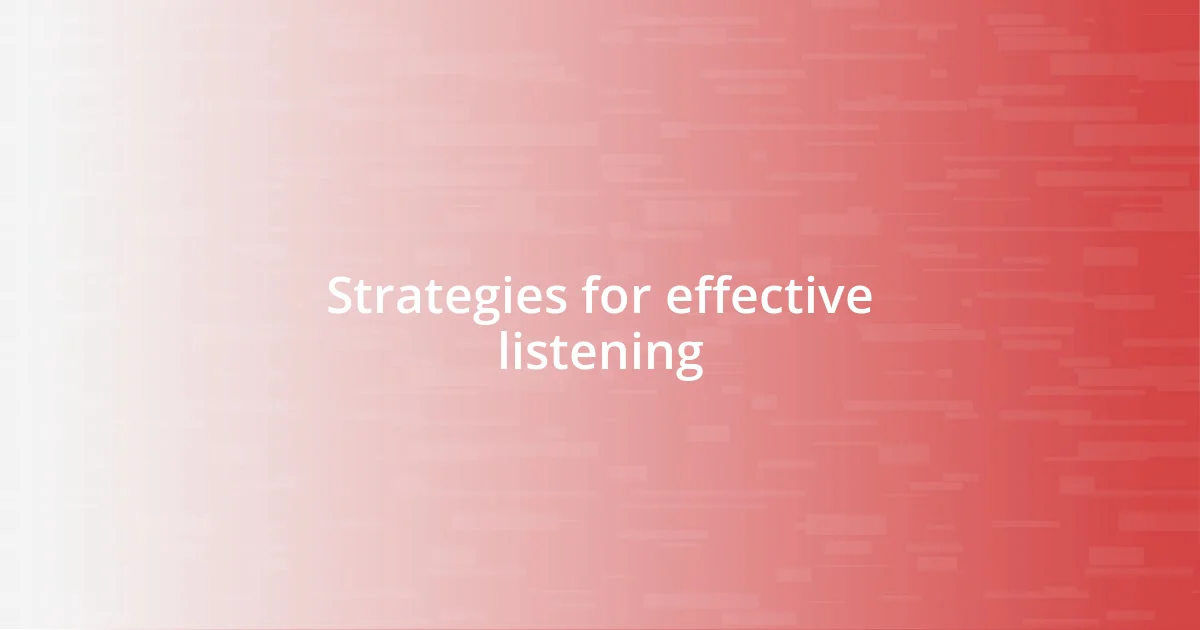
Strategies for effective listening
It’s fascinating how effective listening can truly transform conversations, especially around controversial ideologies. One strategy I’ve found particularly impactful is the practice of paraphrasing. When I actively restate what someone has shared, it not only shows that I’m engaged but also helps clarify their points. I remember a moment during a discussion on immigration when I paraphrased a friend’s feelings about their family’s experiences. This not only validated their emotions but also opened the door for a deeper dialogue about our differing views. Have you ever tried paraphrasing? It’s a simple technique that can foster connection.
Another powerful tool I’ve utilized is the pause. I learned the value of taking a moment to reflect before responding during a lively debate. One time, while discussing climate change, I felt the urge to jump in with my thoughts immediately. Instead, I took a brief pause and allowed myself to process the information. That small break helped me articulate a more thoughtful response and demonstrated respect for the other person’s input. Don’t you think quiet moments have their own way of encouraging deeper insights?
Lastly, I make it a point to ask for clarification when I feel confused about someone’s perspective. This approach reflects my genuine interest in understanding their viewpoint more deeply. I once asked a colleague to elaborate on their stance regarding renewable energy. Their explanation revealed layers of thought I hadn’t considered, enriching my own perspective considerably. Have you found that asking questions can bridge the gap between opposing views? It’s a simple yet effective strategy that can lead to mutual understanding.
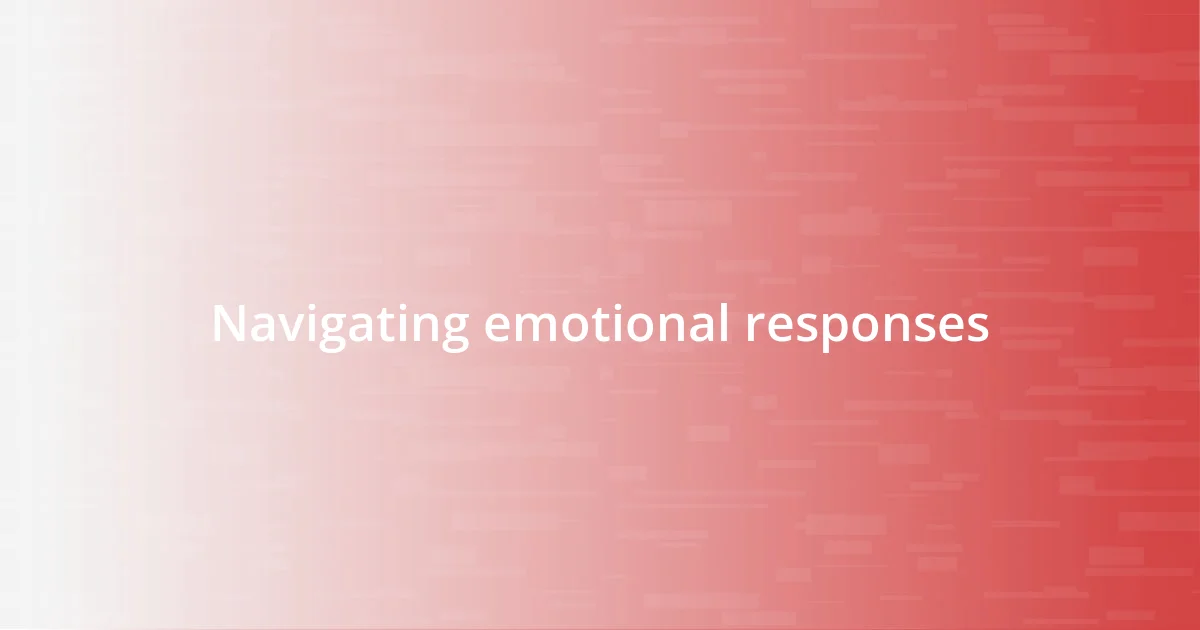
Navigating emotional responses
Navigating emotional responses during discussions about controversial ideologies can be quite a challenge. I recall a time when I joined a debate about gender identity. As emotions ran high, I noticed my heart racing and my palms sweating. Acknowledging this feeling in myself helped me pause and approach the conversation with more empathy. Have you experienced a similar rush of emotions during such discussions? Recognizing these feelings is the first step toward managing them and fostering healthier dialogues.
In situations where tensions rise, it’s important to be authentic about emotions. During a discussion about racial inequality, I found myself grappling with anger and frustration. Instead of suppressing those feelings, I shared them, saying, “I can’t help but feel upset when I think about systemic injustices.” This honesty not only humanized the conversation but also encouraged others to express their feelings. Did you know that sharing emotions can create a more open dialogue? It’s fascinating how vulnerability can spark understanding.
Sometimes, stepping away for a moment can do wonders for emotional clarity. I vividly remember a heated discussion on conspiracy theories where I felt overwhelmed. I took a short break, went for a walk, and breathed deeply. When I returned, my mind was clearer, and I could engage without reacting out of frustration. It made me wonder: what small strategies can we implement to regain composure in intense conversations? A brief interlude can serve as a powerful tool to regain perspective.
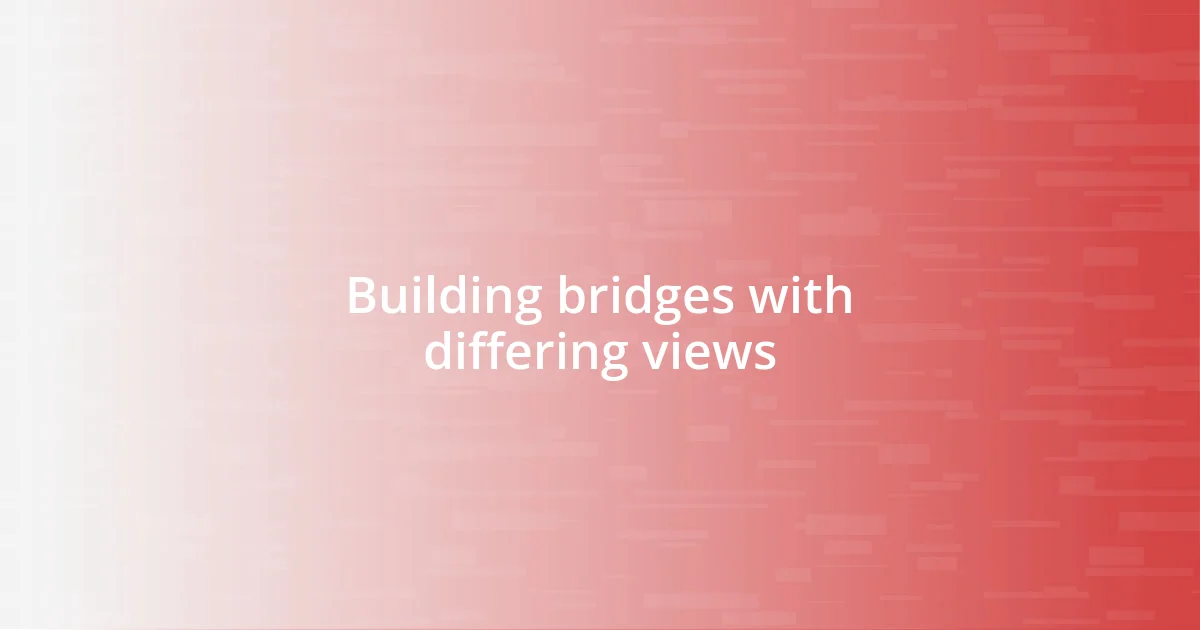
Building bridges with differing views
Building connections with differing views often starts with genuine curiosity. I remember a moment during a community meeting focused on education reform. I approached someone with a starkly different stance on funding allocation. Rather than jumping to defend my side, I asked them to share their experiences with the current system. This simple act of inquiry transformed our interaction; it wasn’t just a debate anymore, but an exploration of perspectives that allowed us to find common ground. Have you noticed how curiosity can shift a conversation from adversarial to collaborative?
Finding shared values can also pave the way for connection. During a chat about social policies, I discovered that despite our differing ideologies, we both deeply cared about the well-being of communities. By acknowledging this shared concern, we shifted the focus from our differences to our common goals, which made the dialogue more productive and respectful. Have you ever tried identifying shared values in a debate? It’s remarkable how this approach can open doors to understanding.
Moreover, storytelling can be an effective bridge. I once shared my personal journey with mental health, relating it to a larger conversation about healthcare access. This openness not only created a safe space for others to share their experiences but also illuminated the real-life implications of abstract policies. It makes me wonder: how can our stories serve to connect us rather than divide us? When we anchor our discussions in lived experiences, we often find ourselves fostering empathy and deepening our connections.
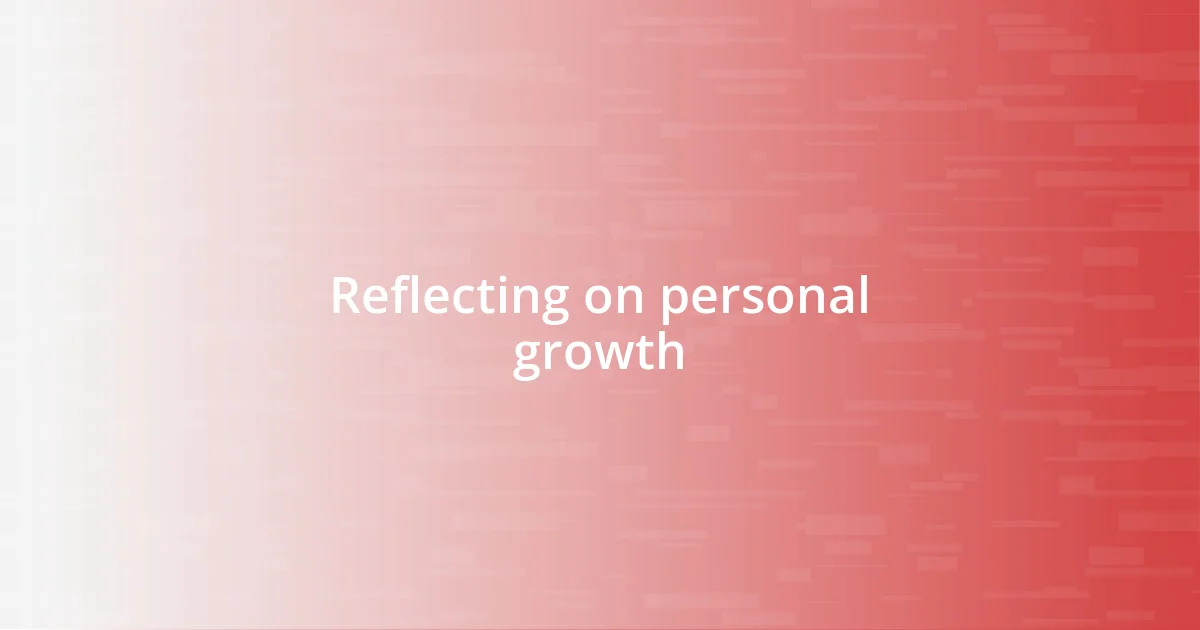
Reflecting on personal growth
Reflecting on my personal growth has been a journey filled with insights and changes. I vividly remember attending a seminar on social justice, where I felt a mix of comfort and unease. Listening to stories that challenged my beliefs, I realized how pivotal those moments were in pushing me to reassess my values. Have you ever had an experience that made you question your understanding of the world? Those moments can be profoundly transformative.
I often find that engaging with controversial ideologies fosters resilience. For instance, during an intensive workshop on climate change, I confronted opposing views that initially upset me. By the end, however, I was amazed at how my discomfort had propelled me to dig deeper into research and better articulate my own stance. It made me reflect on how discomfort can lead to deeper knowledge and refined perspectives. Isn’t it interesting how growth often happens outside our comfort zones?
As I reflect on my evolution in thought, I recognize the importance of humility. There was a time, during a discussion about economic inequality, when I felt a strong urge to defend my viewpoint vehemently. Instead, I chose to listen actively and consider the nuances presented by others. This willingness to embrace vulnerability not only broadened my understanding but also allowed me to connect on a more human level. What if we all approached discussions with a mindset of continuous learning? Embracing that perspective has profoundly influenced my growth and relationships with others.
